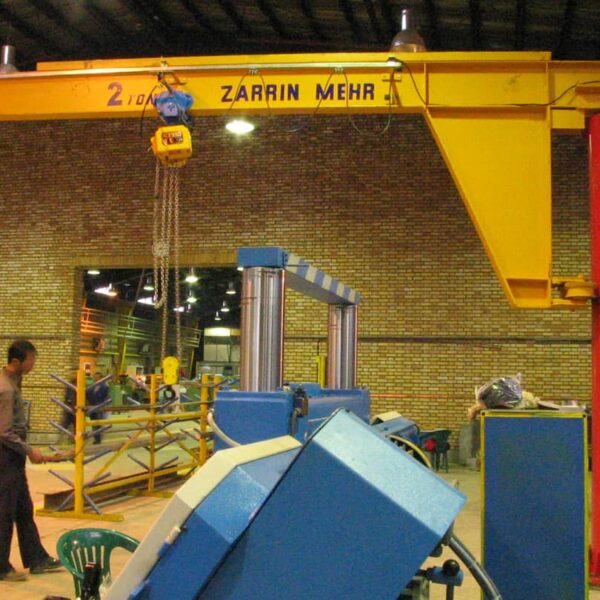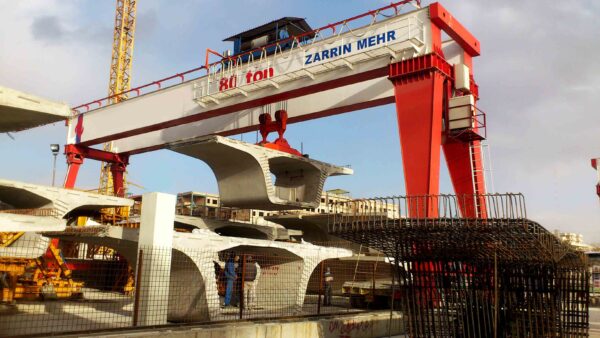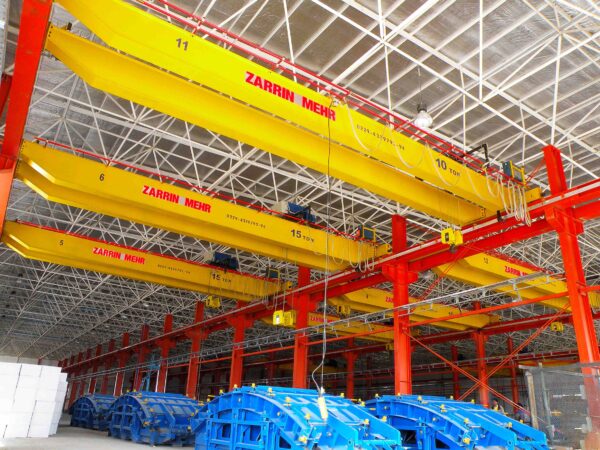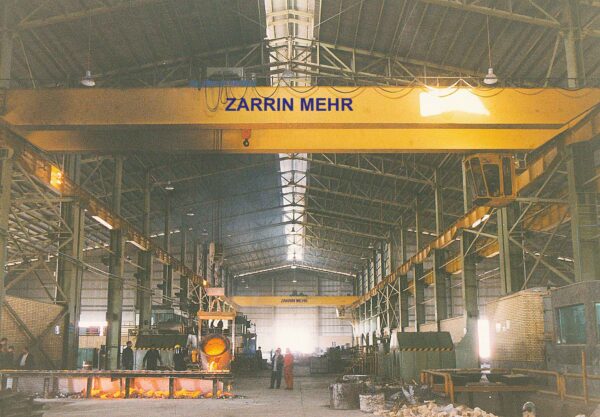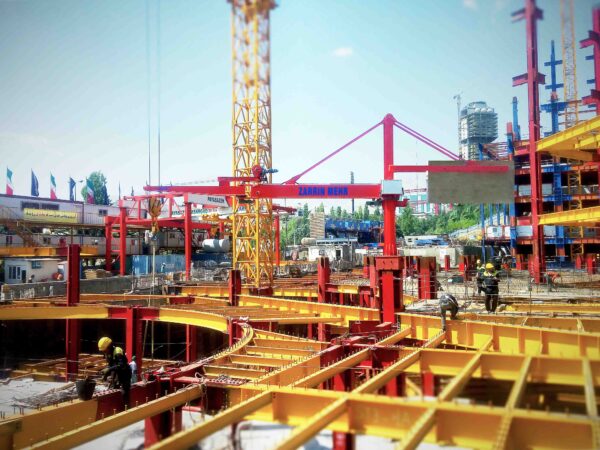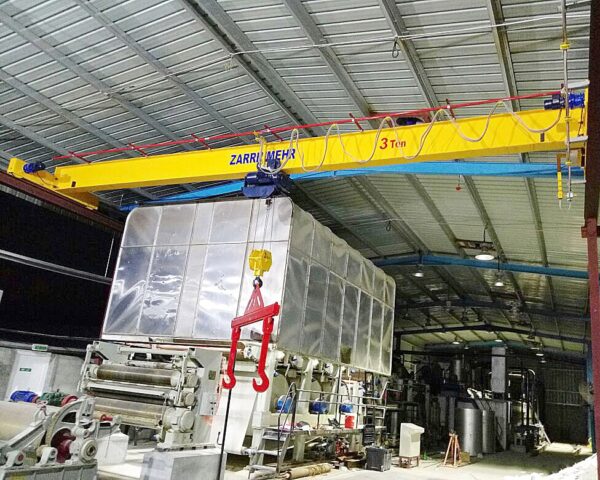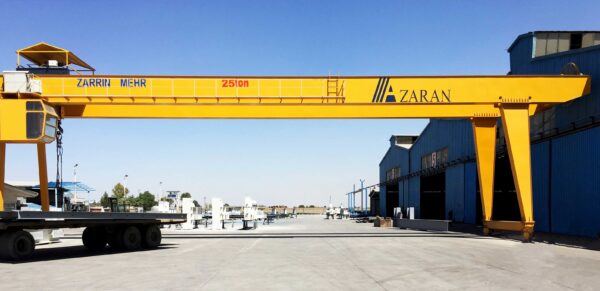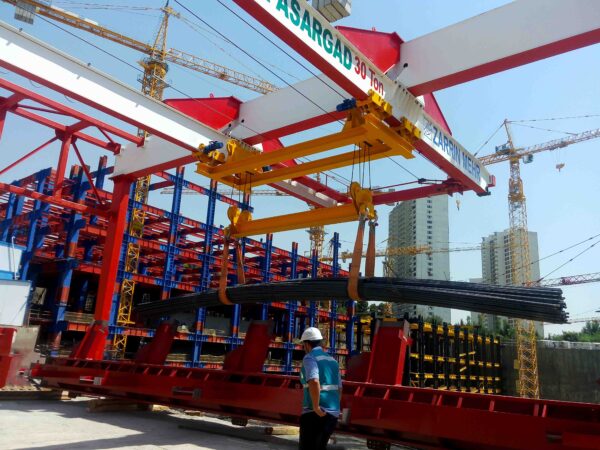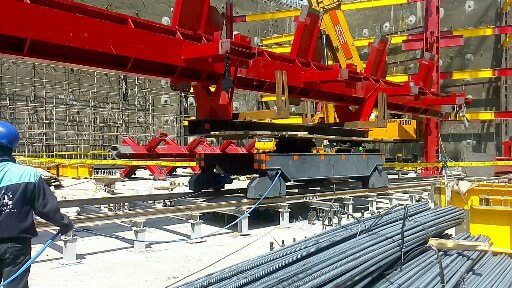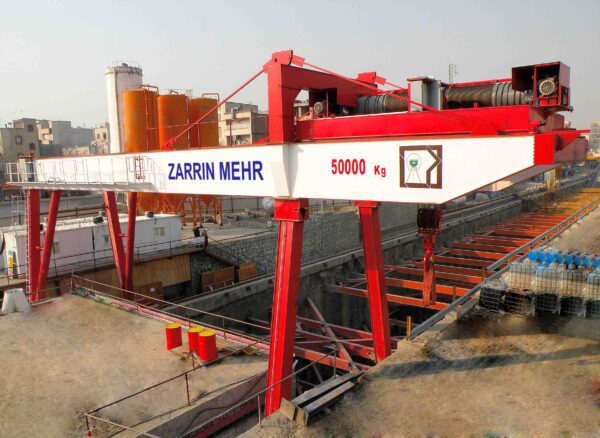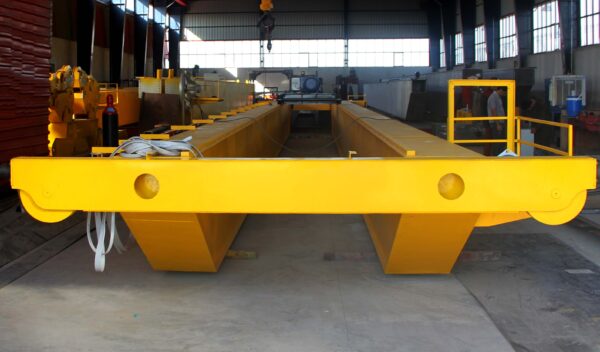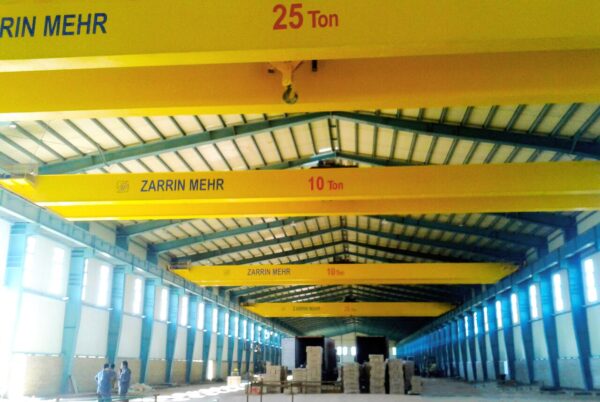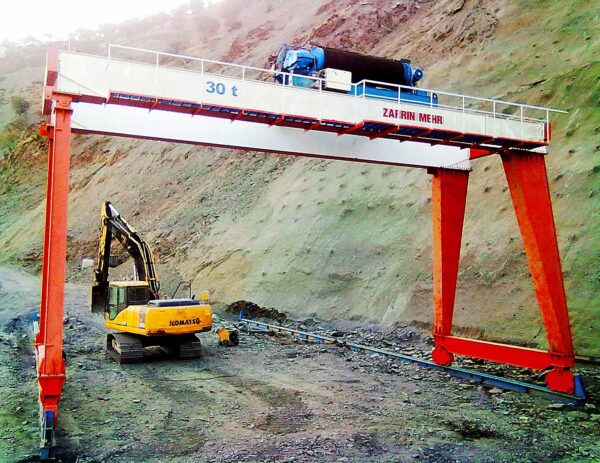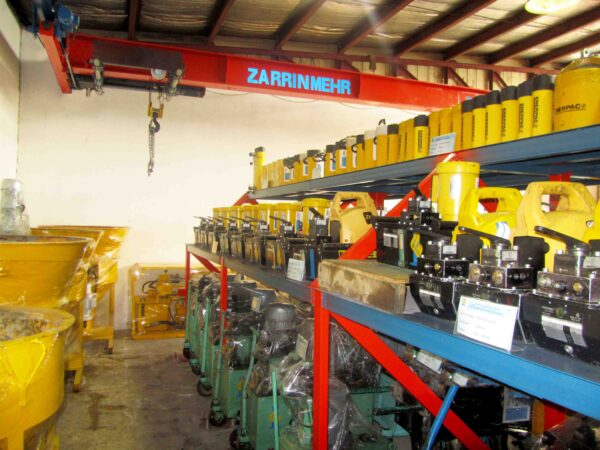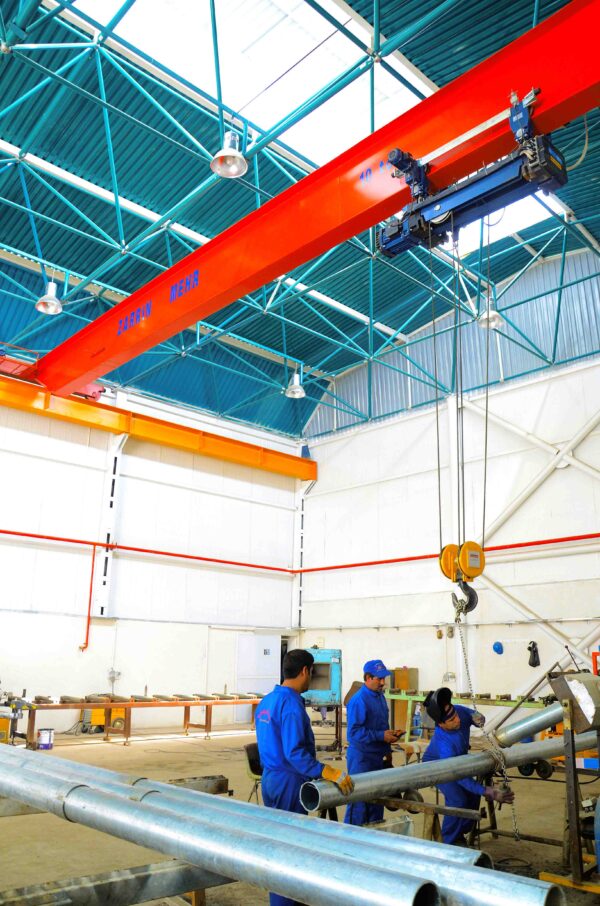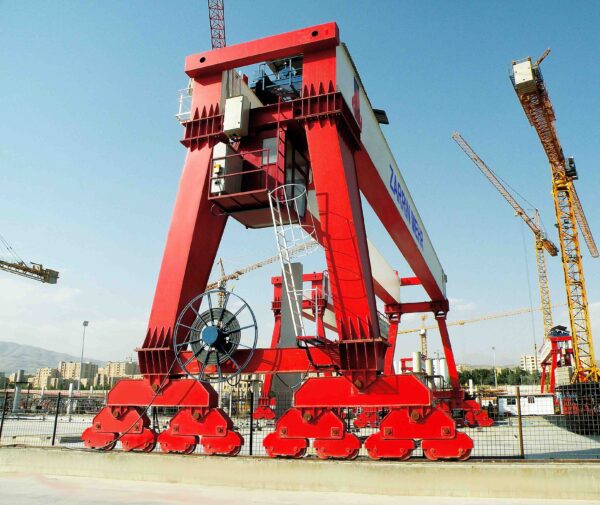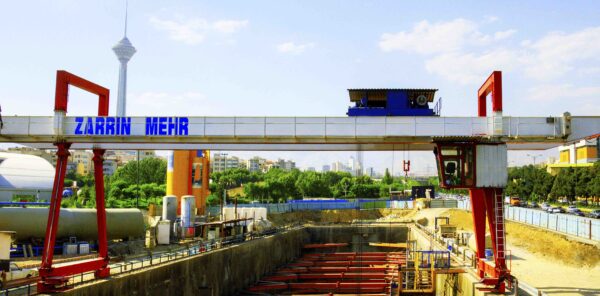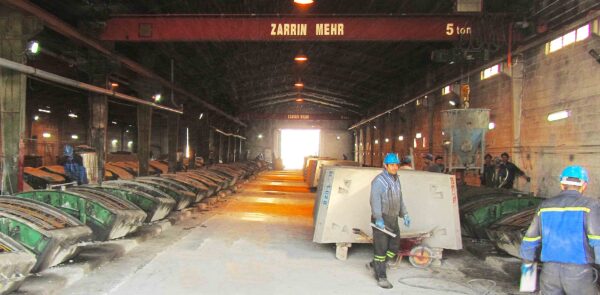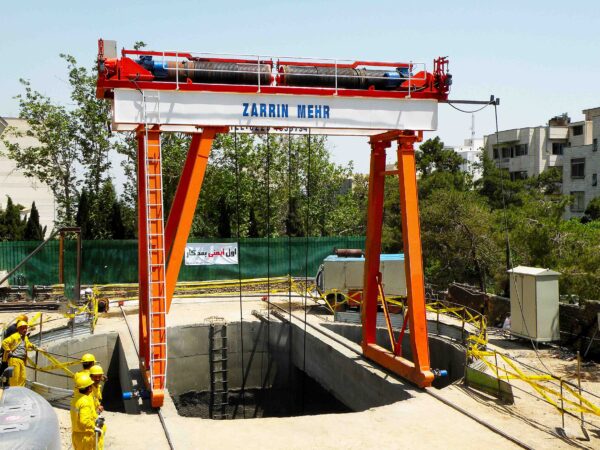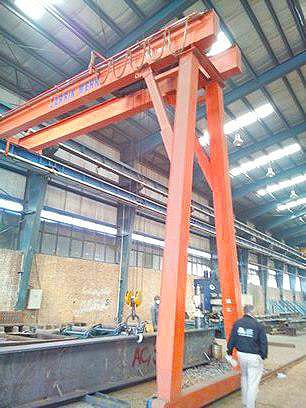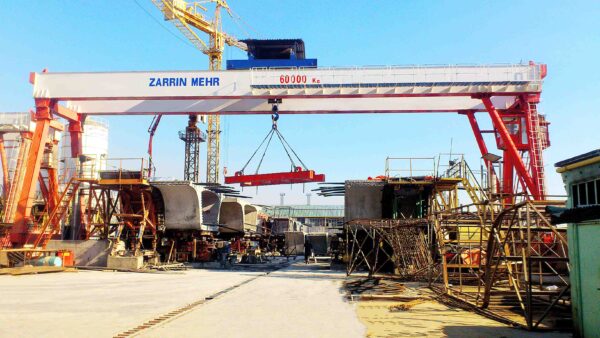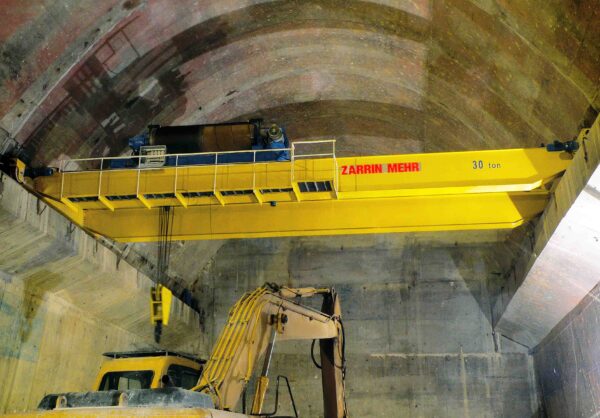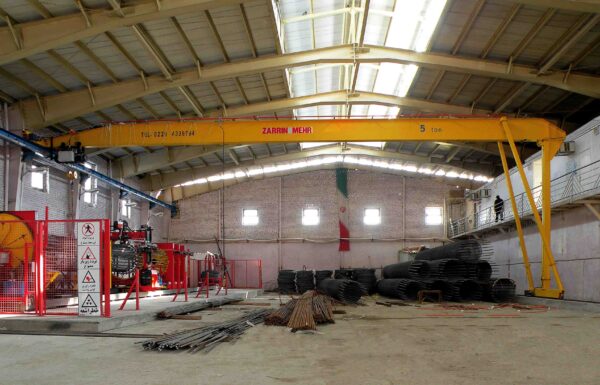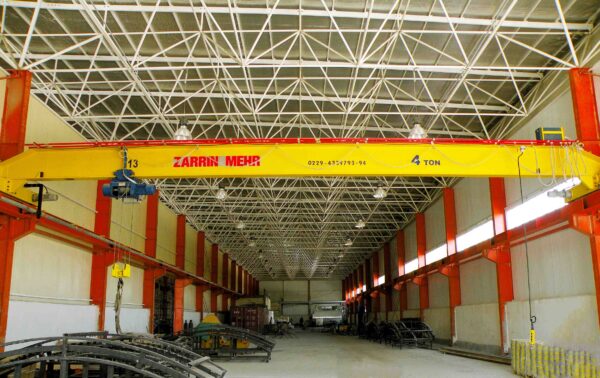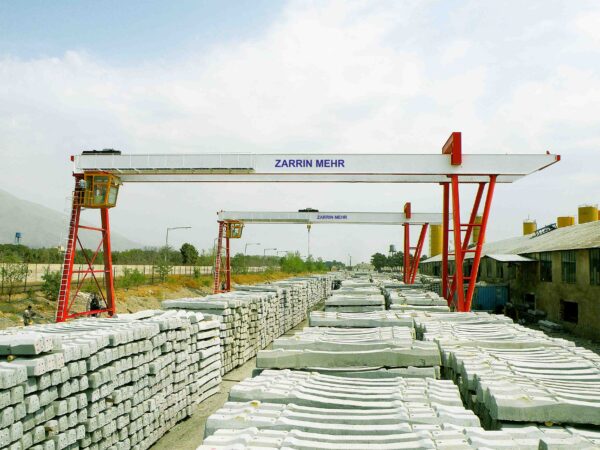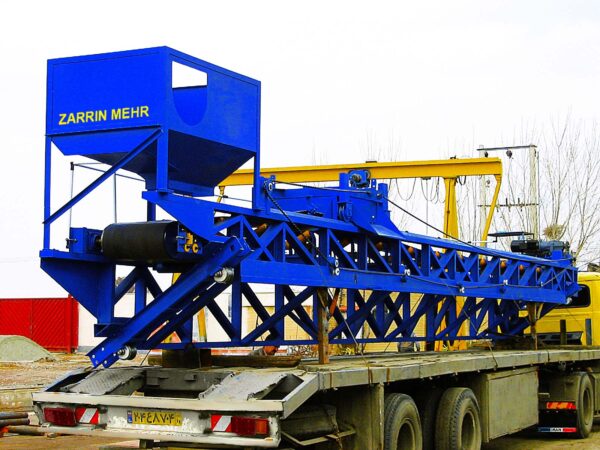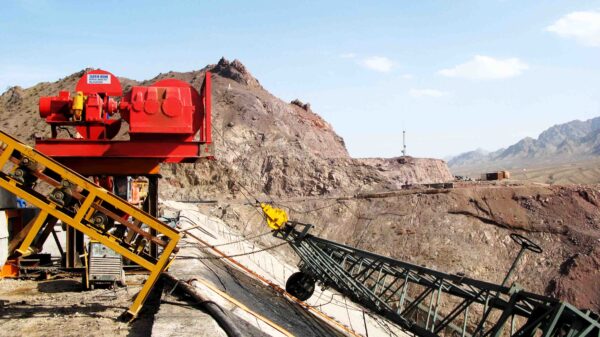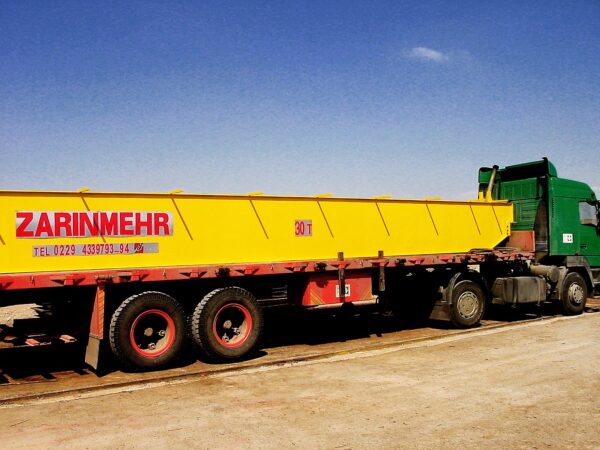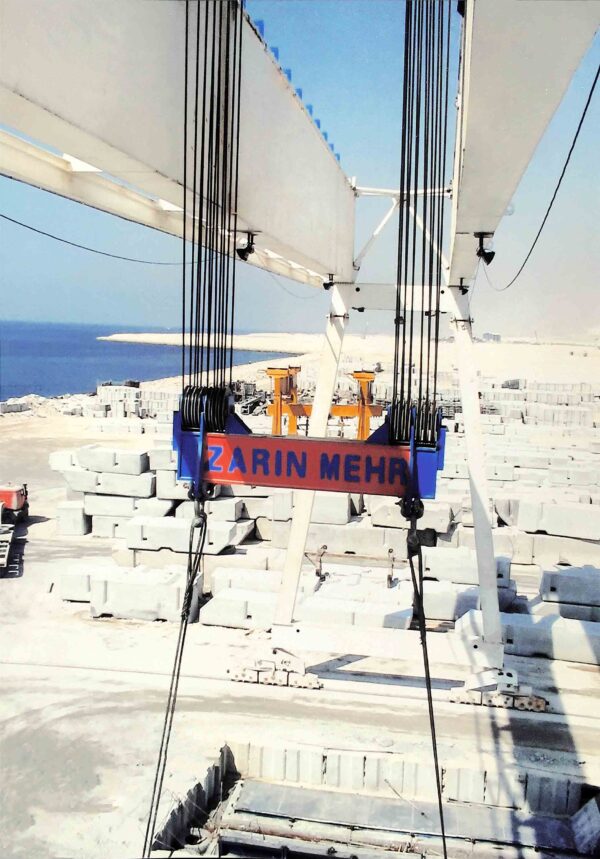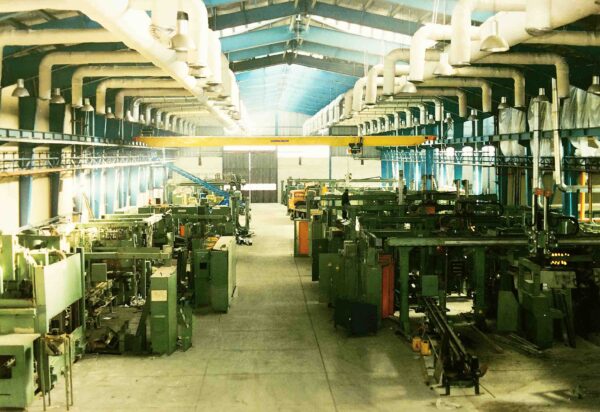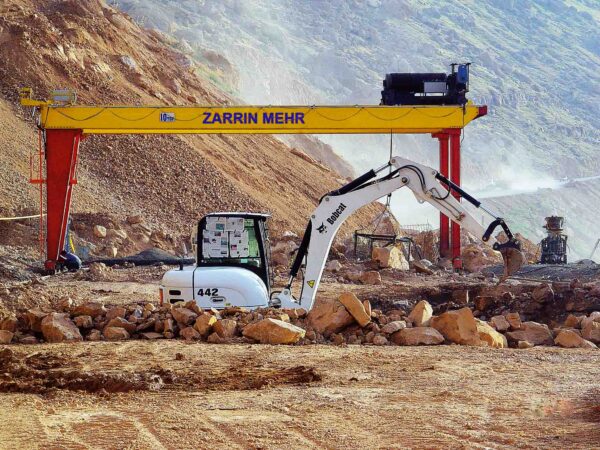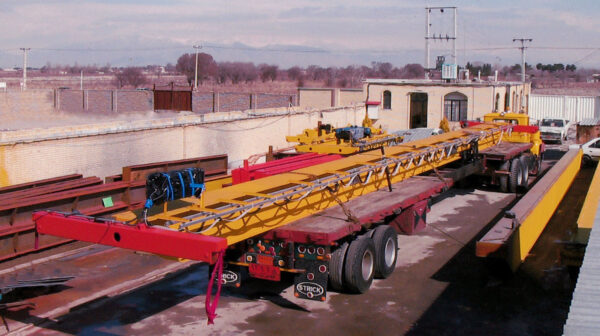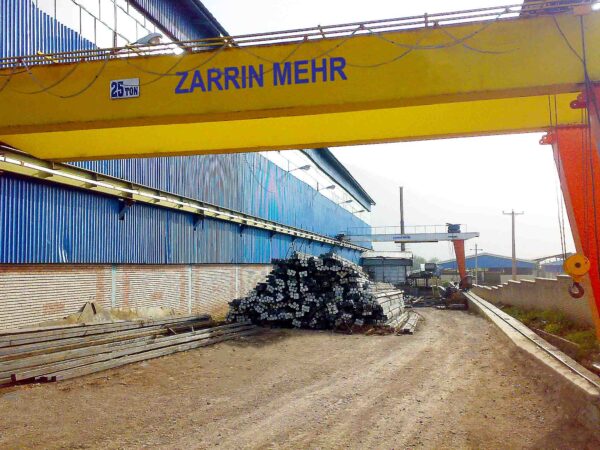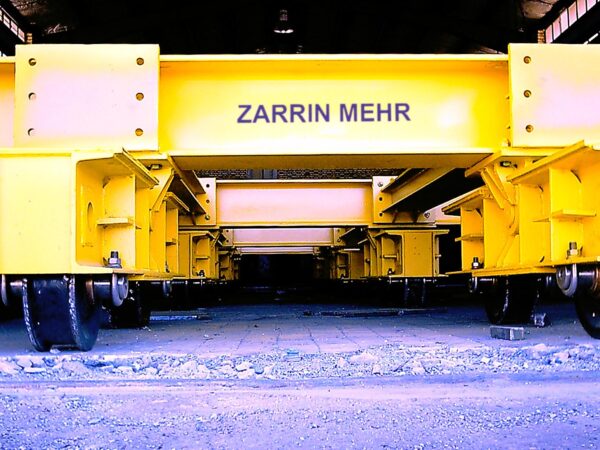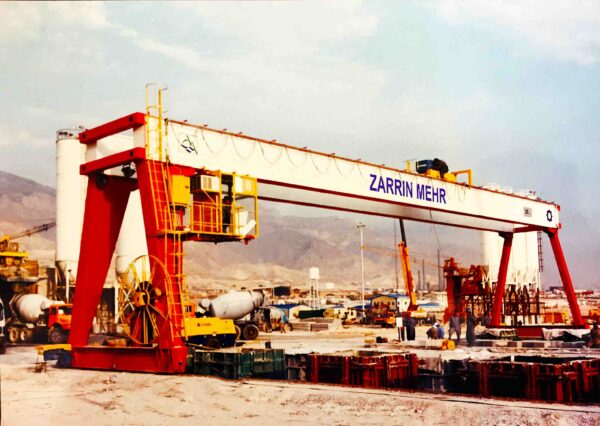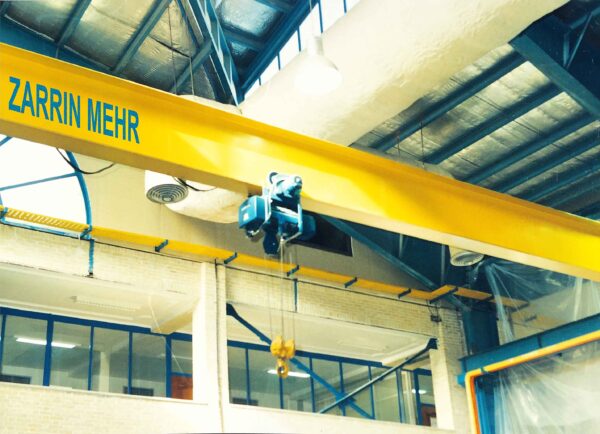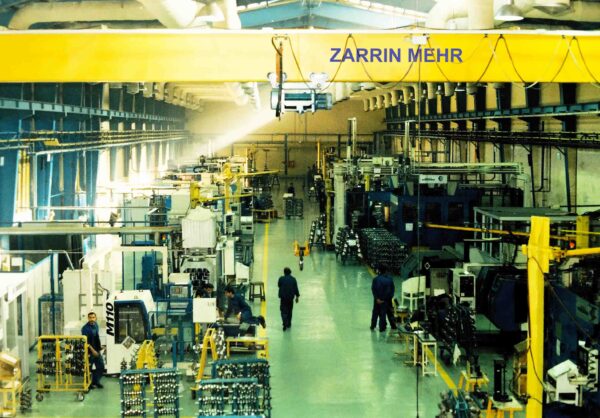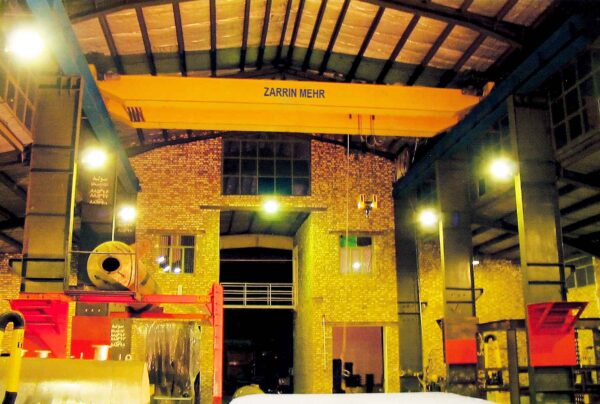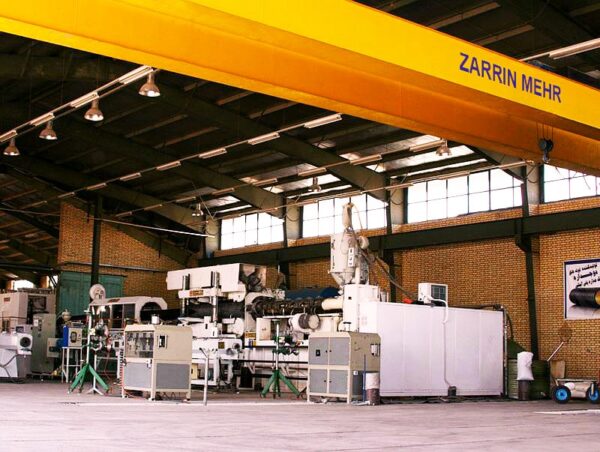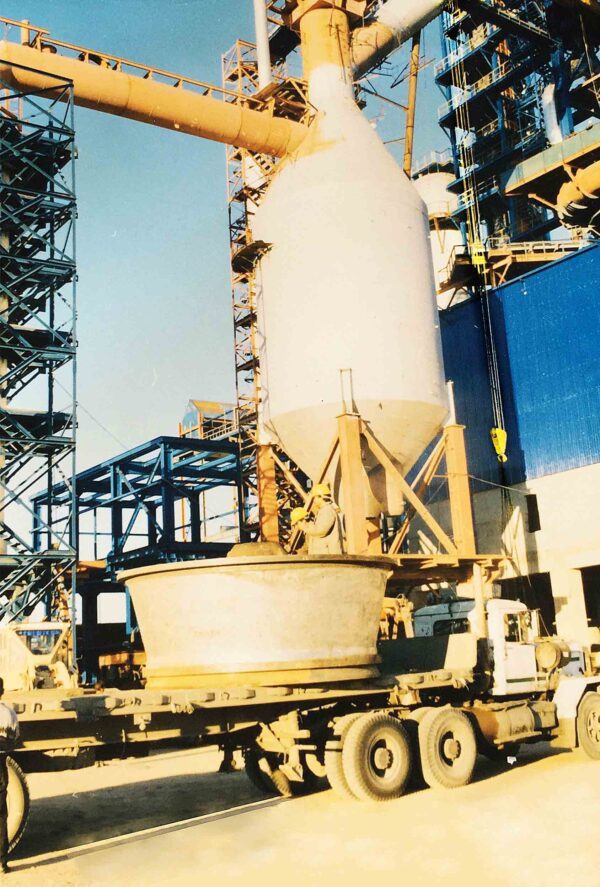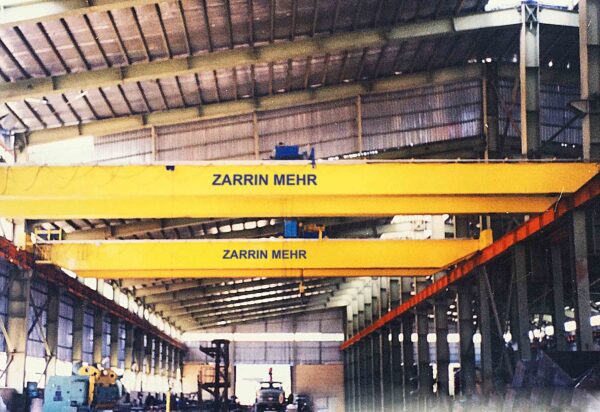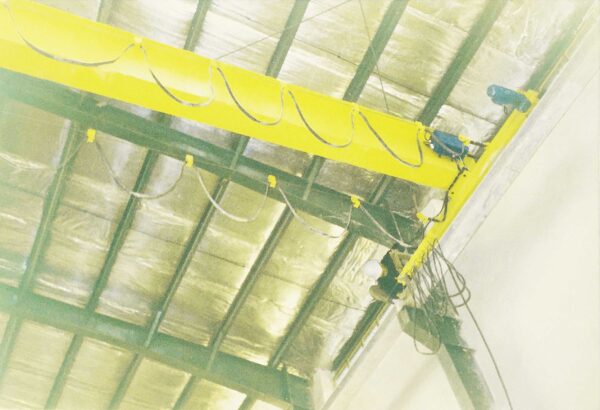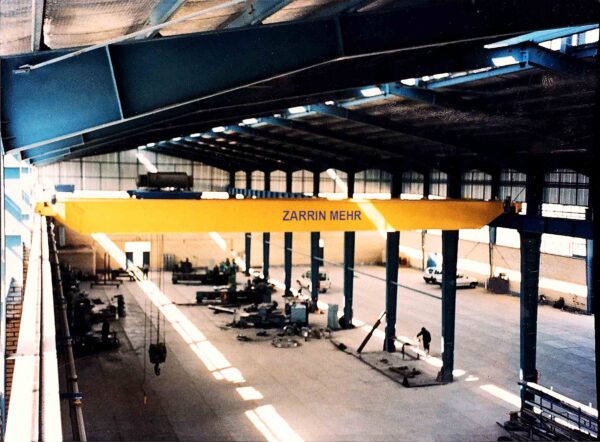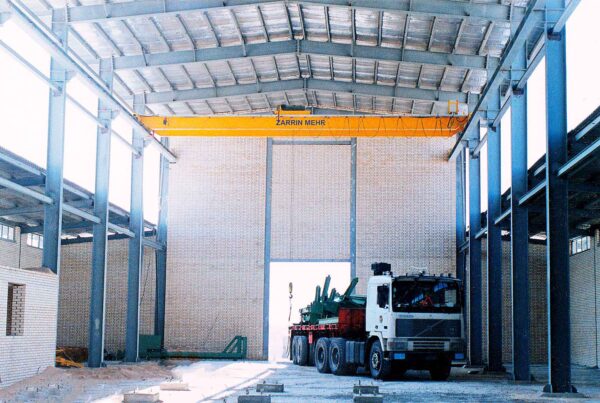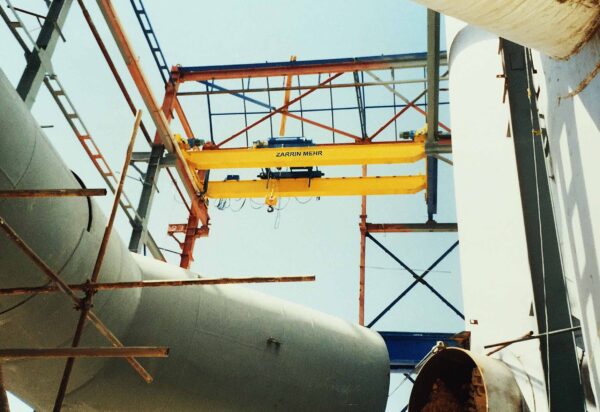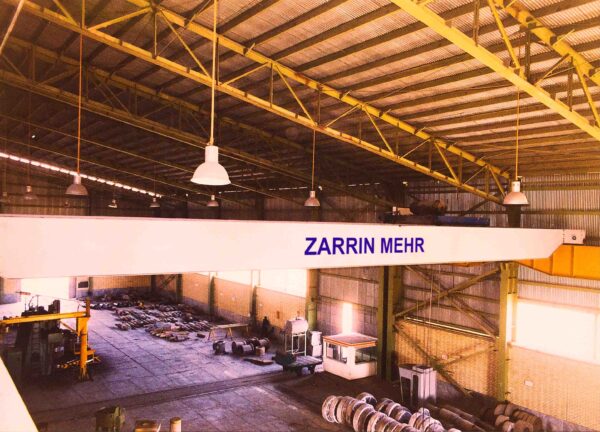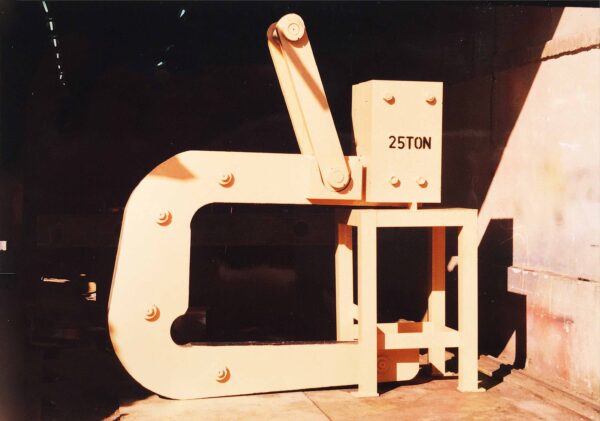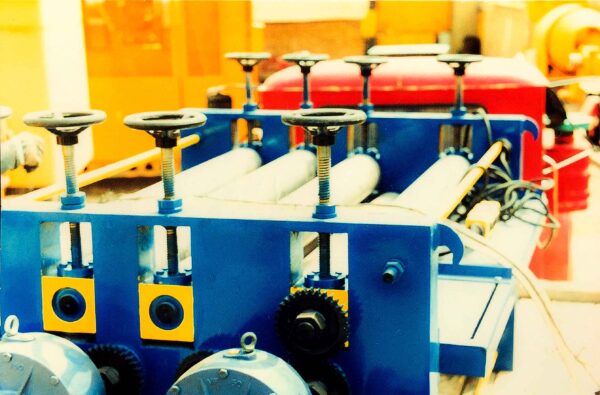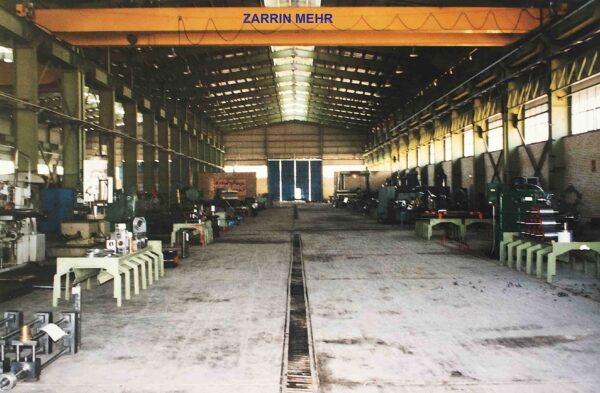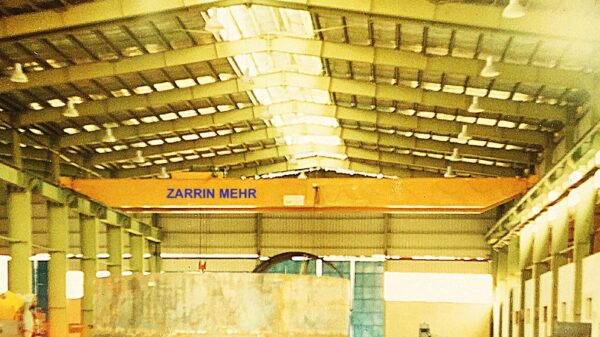A gantry crane is a type of crane used for lifting and transporting heavy objects. Unlike overhead cranes, which are fixed to a specific location within a building or along a set of rails, gantry cranes are usually freestanding and can be moved along a track or simply placed where needed. Gantry cranes consist of a horizontal beam (called a gantry) that spans the width of the work area and supports a trolley or hoist mechanism. The gantry is held up by two or more legs, which may or may not be mounted on wheels or a rail system.
Here are some of the main components of a gantry crane:
- Gantry or Main Beam: This is the horizontal structure upon which the hoist or trolley moves. It spans the area over which materials will be lifted and moved.
- Legs: These vertical supports hold up the gantry. They can be fixed or mobile, depending on the design.
- Hoist/Trolley: This mechanism is used for lifting and lowering the load. The trolley allows for lateral movement along the gantry.
- Rails or Tracks: In some models, the legs of the gantry crane move along tracks, allowing for horizontal movement across a work area.
- Controls: These could be manual, electric, or even remote-controlled. The controls are used to operate the hoist and move the trolley along the gantry.
- End Trucks: These components are attached at either end of the gantry and may contain wheels that allow for movement along a track.
- Cables/Wires: These are used to transmit power and control signals to the moving parts of the crane.
- Hooks, Slings, or Other Attachments: These are used to secure the material or object that is being lifted.
Gantry cranes come in various sizes and configurations, including:
- Full Gantry Cranes: These are large, often used in shipyards or big industrial applications. They can handle extremely heavy loads.
- Portable Gantry Cranes: These are smaller, mobile cranes often used in workshops or smaller industrial settings.
- Adjustable Gantry Cranes: These cranes have adjustable heights and spans to accommodate different work environments and needs.
- Semi-Gantry Cranes: These have one leg with wheels that moves along a track, while the other side of the gantry is fixed.
Gantry cranes are used in various industries including construction, manufacturing, shipbuilding, and in any setting where heavy objects need to be moved efficiently. They offer the advantages of being relatively easy to install and flexible to use, although they typically require a good amount of floor space. Safety precautions are essential when operating a gantry crane to ensure that loads are securely attached and that the crane’s weight limits are not exceeded.


